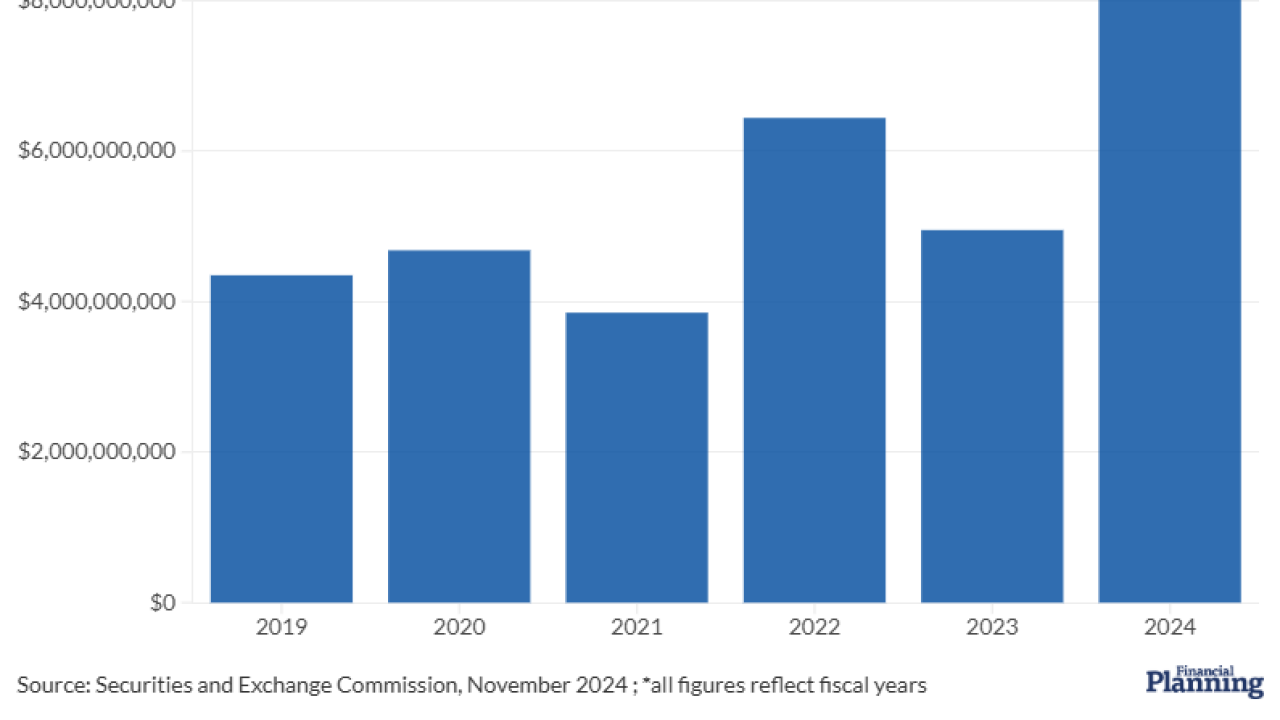There is one question asked by all planners’ clients: “How much can I safely withdraw from my retirement portfolio?”
There are so many personal variables to factor in for each client that it might seem impossible to approach any sort of sensible answer. But we actually can — premised on several assumptions. I’ll show you how.
The analysis I’ll present is based on a portfolio composed of four primary asset classes: large U.S. stock, small U.S. stock, U.S. aggregate bonds and U.S. cash. Large stock is represented by the S&P 500, while small U.S. stock is represented by the Ibbotson Small Stock Index from 1961 to 1978 and the Russell 2000 Index from 1979 to 2018. U.S. bonds are represented by the SBBI U.S. Intermediate Government Bond Index from 1961 to 1975 and the Barclays Aggregate Bond Index from 1976 to 2018. U.S. cash is represented by 90-day Treasury bills.
The portfolio asset allocation in this analysis is 40% large-cap U.S. stock, 20% small-cap U.S. stock, 30% bonds and 10% cash (with annual rebalancing).
Studying the results of retirement portfolio survival during one 25-year period (representing a person retiring at 70 and surviving for the next 25 years until the age of 95) is inadequate given the variability of returns. Thus, multiple 25-year time periods must be analyzed. Here, 34 rolling 25-year periods were examined between 1961 and 2018. The first 25-year retirement period was from the start of 1961 to the end of 1985. The second 25-year period was from 1962 to 1986, and so on.
A starting balance of $1 million was assumed at age 70. The four-asset retirement portfolio was tested using 15 different withdrawal rates ranging from 1% to 15% for each of the rolling periods. The results were compiled and averages computed. The impact of taxes was not accounted for. This analysis also assumes the retirement portfolio was not subject to the RMD, which would be the case for a Roth IRA account.
As shown in “Withdrawal rate matrix,” a 1% annual withdrawal rate produced an average annual withdrawal of $34,243. The average ending portfolio balance at age 95 (after 25 years of withdrawals) was $8.2 million. Clearly, a four-asset portfolio can handle a 1% withdrawal rate, as the average ending balance was over 8x larger than the starting balance. At a 1% withdrawal rate, the maximum ending balance was nearly $19 million and the smallest ending balance was just under $4 million. Thus, it’s clear that a 1% withdrawal rate is extremely conservative.
Let’s move to the long-touted 4% withdrawal rate. The average annual withdrawal was $88,826 and the average ending portfolio balance 25 years later was just over $4 million. The maximum ending balance was $9.49 million and the smallest ending balance was $1.8 million. The variance between the maximum and minimum ending balance clearly reveals the impact of what we refer to as sequence-of-returns risk. If the sequence of portfolio returns was favorable (meaning high returns in the early years), the ending balance is much higher. And vice versa.
It’s important to note that at every withdrawal rate analyzed, the portfolio survived intact for all 25 years in all rolling periods. When only withdrawing a percentage of the portfolio’s value at the end of each year, it’s not possible to actually empty the portfolio. But, practically speaking, the value of a portfolio can be seriously eroded at high rates of withdrawal (as shown by the minimum ending balance using a 15% withdrawal rate).
A 6% withdrawal rate is highlighted in yellow because it represents the highest withdrawal rate that never produced an ending balance lower than the starting balance of $1 million. The withdrawal rate of 8% is highlighted in green because it represents the withdrawal rate that maximized the average annual withdrawal. In this case, it was $103,844.

It may be counterintuitive, but once the withdrawal rate exceeded 8% in this analysis, the average annual withdrawal began to decline. In other words, employing a withdrawal rate higher than 8% did not increase retirement income (assuming the specific asset allocation employed in this analysis)
In short, don’t use a withdrawal rate higher than 8% if your retirement portfolio has an allocation similar to the one in this analysis, because it will not increase your average annual withdrawal. Moreover, an annual withdrawal rate of 10% or higher caused the average ending balance of the retirement portfolio to be lower than the starting balance of $1 million.
The interplay between withdrawal rate, average annual withdrawal amount and ending portfolio balance after 25 years is depicted in “Retirement curves.” The curves cross at a 3.5% withdrawal rate, which may not have any deep meaning but does correlate closely to the longstanding general rule of 4% being a so-called safe withdrawal rate.
What’s more interesting is the fact that, at higher withdrawal rates, the ending portfolio balance (in orange) declines in a very systematic fashion. The average annual withdrawal is another story. It increases as the withdrawal rate increases, but then after 8%, it begins to decrease. Thus, as already noted, an 8% withdrawal rate is a boundary you should not let your clients cross.
Intuition may have already told you that — but now you have the numbers to back it up.






